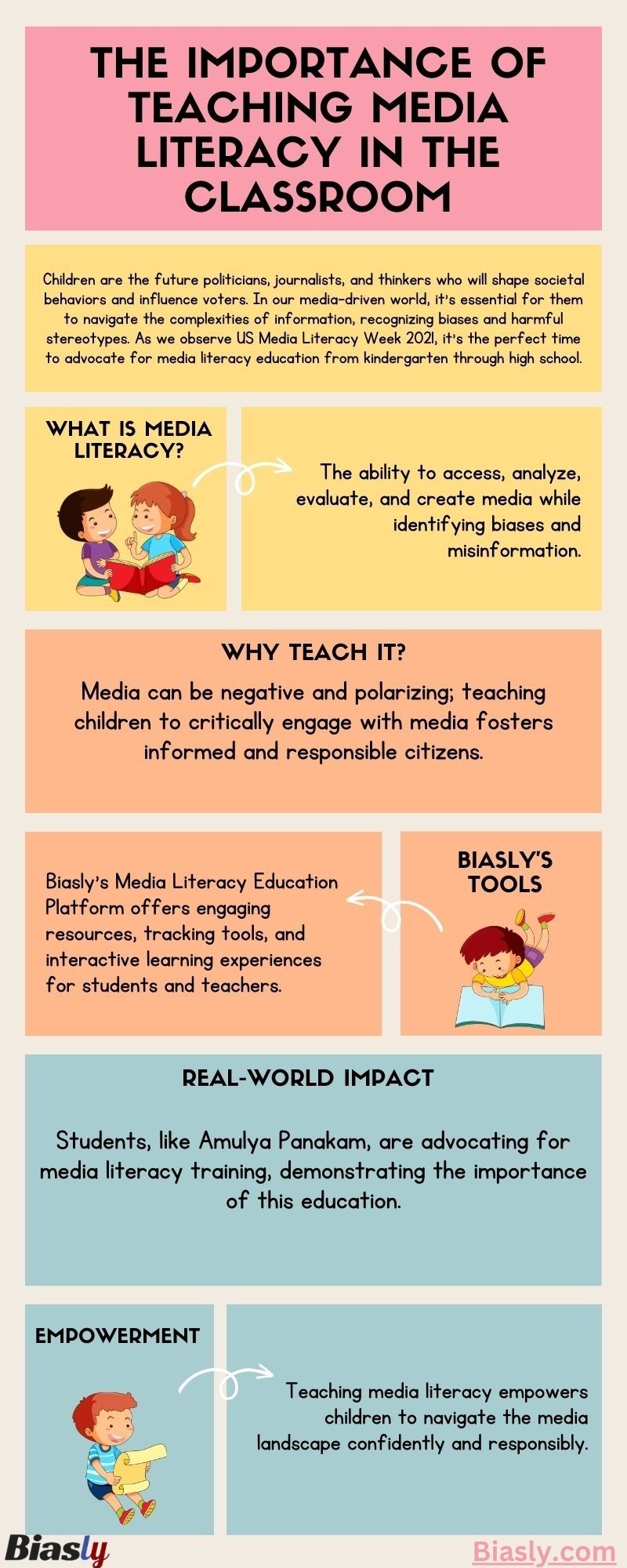
Children are the politicians, journalists, and thinkers of the future. They are the soon-to-be creators and consumers of the news that will shape social behaviors and influence prospective voters.
It matters that we all know how to navigate the sometimes murky waters of the media. What is published online – both words and images – can and does influence people’s opinions. That doesn’t just mean fake news. It also means biases in advertising, harmful images, and the perpetuation of stereotypes and political agendas.
As adults, we might be a little savvier in wading through the quagmire and picking out the most neutral and balanced news to inform our opinions – but it is still not easy. I’m sure we have all read or shared something that we may later have questioned or found out to be untrue. If it’s a jungle out there for adults, how do we expect children and young adults to deal with it?
We can go a long way towards helping children navigate the world of media by making it a part of the education system. With US Media Literacy Week 2021 happening October 25-29, there has never been a more timely moment to explore why Media Literacy education should be part of the modern-day curriculum from kindergarten through to high school.
What is Media Literacy
Media Literacy is the ability to access, analyze, evaluate and create media in a number of forms. It means being able to identify media biases and fake news or harmful stereotypes in online media, and having the ability to navigate the media-maze in a way that keeps us informed and educated as consumers.
Why should we teach media literacy to children?
News, entertainment, and other forms of media can be negative, polarising, and overwhelming. How many times have you felt a wave of negative emotions from reading or viewing something online? Maybe anger or frustration? Sometimes it can make you not want to engage at all. But we do want children to engage in society and with their communities in a safe and informed way.
We need to teach children to stand back, pause and think about what they are seeing in the media. Is it true? Is it harmful? In this way, we can help them become a generation of independent, informed readers and consumers of media.
Let’s equip children with these tools before their own biases become too deeply ingrained, and they become angry or disillusioned by what they are reading and seeing.
We also want to ensure that children are more mindful as creators of media. Do they know what they are doing when they post and share online? Is what they are sharing true, or a positive reflection of who they are and want to be?
Check out this short fun video that demonstrates how important we at Biasly believe it is to teach Media Literacy in the classroom.
Our Media Literacy Education Platform Platform
It can be daunting to think of where to start teaching media literacy to children. As an educator you want to make sure that it can be done in an easily accessible manner, and without taking up more of your time to prepare.
Our MLEP platform at Biasly is everything you need to ensure a comprehensive and easy-to-navigate approach to helping students learn how to become a generation of educated and impartial thinkers!
In this training, students (and teachers!) will learn about the history of media bias and the effects it has on individuals and society. Students will learn how to identify biases in the media, and how media companies interact with the political world. They will also learn how to rate articles and compare their results with our clever AI rating tool. Most importantly, they learn new skills of analysis and critical thinking which they can apply to everyday life.
Check out these Top 5 reasons why our state of the art software will take your Media Literacy teaching to the next level:
- This is a FULL and complete bias-education course. Everything you need is in one package
- The learning is engaging and interactive with quizzes and opportunities to put the learning into practice
- Student progress can be tracked with statistics and metrics. You can see how the students are performing and it gives them a healthy target to reach
- No need to feel overwhelmed on how to teach the course – we also show teachers how to administer the content!
- Students receive badges and awards throughout the process, plus a certificate upon completion. Students feel a sense of pride at getting familiar with this interesting and relevant topic
It is positive to see steps being made towards the promotion of media literacy training. High school student Amulya Panakam has been busy campaigning to help fund education about misinformation online. She was shocked at how willingly people at her school shared and perpetuated an online fake news story without a thought that it might not be true. She felt compelled to reach out to Media Literacy Now who assisted her in writing to her local representatives to discuss introducing Media Literacy training in the classroom.
Now you can do your part as an educator by reaching out today to Biasly to find out how our software can help you empower the next generation of enlightened adults!
























